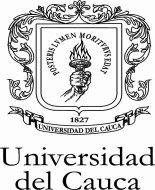BOYLE’S LAW P1 X V1 P2 X V2
1011 BOYLE’S LAW IN A VACUUM DESCRIPTION SEVERAL DIFFERENTA RESOURCE FOR FREESTANDING MATHEMATICS UNITS BOYLE’S LAW BOYLE’S
ACC CHEMISTRY CHAPTER 11 WORKSHEET 1 NAME (BOYLE’S
ALL CHEMISTRY CLASSES BOYLE’S LAW LAB NAME PURPOSE
BOYLE’S LAW P1 X V1 P2 X V2
CLASS COPY BOYLE’S CHARLES’ AND GAYLUSSAC’S GAS PROBLEMS 1
Boyle’s Law
Boyle’s Law
P1 x V1 = P2 x V2
Solve the following problems (assuming constant temperation).
A sample of nitrogen gas occupies a volume of 175 mL at 740 mm Hg. What volume will it occupy at 800 mm Hg?
A container of neon has 3.5 liter of gas at 150 kPa pressure. What pressure would the gas exert if the volume is decreased to 1.0 liters?
A 2.0 liter container of carbon dioxide has a pressure of 3.2 atm. What volume would be necessary to decrease the pressure to 1.0 atm?
Ammonia gas occupies a volume of 575 mL at a pressure of 850 mm Hg. What volume will it occupy at standard pressure?
A 278 mL sample of oxygen had its pressure changed from 80 kPa to 150 kPa. What is its new volume?
A sample of chlorine gas at 3.5 atm had its pressure decreased form 1.2 atm. What was the original volume, if the new volume is 850 mL?
Fluorine gas occupies a volume of 0.5 Liters at 650 mm Hg pressure. What volume will it occupy at 2.2 mm Hg?
Hydrogen gas exerts a pressure of 900 mm Hg. When the pressure is changed to 1.50 atm., its volume is 250 mL. What was the original volume?
Boyles’ Law Worksheet
1.00L of a gas at standard temperature and pressure is compressed to 473mL. What is the new pressure of the gas?
In a thermonuclear device, the pressure of 0.050L of gas within the bomb casing reaches 4.0 x 106 atm. When the bomb casing is destroyed by the explosion, the gas is released into the atmosphere where it reaches a pressure of 1.00atm. What is the volume of the gas after the explosion?
Synthetic diamonds can be manufactured at pressures of 6.00 x 104 atm. If we took 2.00L of gas at 1.00atm and compressed it to a pressure of 6.00 x 104 atm, what would the volume of that gas be?
The highest pressure ever produced in a laboratory setting was about 2.0 x 106 atm. If we have a 1.0 x 10-5 L sample of a gas at that pressure, then release the pressure until it is equal to 0.275atm, what would the new volume of that gas be?
Atmospheric pressure on the peak of Mt. Everest can be as low as 150 mm Hg, which is why climbers need to bring oxygen tanks for the last part of the climb. If the climbers carry 10.0L tanks with an internal gas pressure of 3.04 x 104 mm Hg, what will be the volume of the gas when it is released from the tanks?
Part of the reason that conventional explosives cause so much damage is that their detonation produces a strong shock wave that can knock things down. While using explosives to knock down a building, the shock wave can be so strong that 12L of gas will reach a pressure of 3.8 x 104 mm Hg. When the shock wave passes and the gas returns to a pressure of 760 mm Hg, what will the volume of that gas be?
Submarines need to be extremely strong to withstand the extremely high pressure of water pushing down on them. An experimental research submarine with a volume of 15,000L has an internal pressure of 1.2 atm. If the pressure of the ocean breaks the submarine forming a bubble with a pressure of 250atm pushing on it, how big will that bubble be?
Divers get “the bends” if they come up too fast because gas in their blood expands, forming bubbles in their blood. If a diver has 0.05L of gas in his blood under a pressure of 250atm, then rises instantaneously to a depth where his blood has a pressure of 50.0atm, what will the volume of gas in his blood be? Do you think this will harm the diver?
EXCERPT FROM ROBERT BOYLE’S OCCASIONAL REFLECTIONS ON SEVERAL SUBJECTS
EXPERIMENT 6 BOYLE’S AND CHARLES’ LAW NAME DATE
EXPERIMENT 9 EXPERIMENT 9 BOYLE’S LAW PURPOSE 1 TO
Tags: boyle’s law, boyle’s
- DET NASJONALE MUSEUMSMØTET 5 8 SEPTEMBER 2007 1
- PCTMIA204 PAGE 6 E PCTMIA204 ORIGINAL ENGLISH ONLY DATE
- UNIVERSIDAD DE CORDOBA INSTITUTO DE ESTUDIOS DE POSGRADO IMPRESO
- MEDICAID LONGTERM CARE PERFORMANCE MEASURE SPECIFICATION MANUAL REQUIRED RECORD
- Arizona Research Institutions the Following Pages Contain Information
- Plan Academico Individualizado Curso 201617 Otras Actividades Docentes Profesor
- SOLICITATION SLC03013 PAGE 1 OF 52 SOLICITATIONCONTRACTORDER FOR COMMERCIAL
- UNIVERSIDAD SANTO TOMÁS VICERRECTORÍA ACADÉMICA GENERAL UNIDAD DE INVESTIGACIÓN
- INSTRUKCJA DOTYCZĄCA WYMOGÓW EDYTORSKICH I ZASAD PISANIA PRAC MAGISTERSKICH
- html Classnojs Langes !![endif] head meta Charsetiso88591 meta
- POWERPLUSWATERMARKOBJECT21230033 EK07 CÜSBE TEZ YAZIM KILAVUZU – ÖZET SAYFASI
- NAME DATE WRITING THE EQUATION OF PARALLEL
- CERVICAL LAMINOPLASTY CERVICAL LAMINOPLASTY IS A TYPE OF MOTION
- J UL 2008 ORDER FÖRE 10DEC 10 LEV V49
- FORMULAR ZUR SELBSTBEWERTUNG THÉÂTREPROVS EINES ABGESCHLOSSENEN STAAT WALLIS
- LINKING VIRGINIA RESOURCES TOGETHER WOODROW WILSON REHABILITATION CENTER (FALL
- UNIVERSITÄT TRIER SS 2010 FACHBEREICH I PHILOSOPHIE PROSEMINAR FICHTE
- L’EXISTENTIALISME EST UN HUMANISME DE JEANPAUL SARTRE ÉDITION GALLIMARD
- TWO KEYHOLE RESERVOIR DATABASES ARE IN THIS FOLDER KEYCOMP
- GEN FUNCIÓN AFECTACIÓN RENAL AFECTACIÓN EXTRARRENAL BIOSÍNTESIS DE COENZIMA
- AUDITORILY IMPAIRED VISUALLY IMPAIRED M EMORANDUM OF UNDERSTANDING
- ÄR ”MÅNGSYSSLERI” LOKALT NYCKELN TILL FRAMGÅNGSRIK VÄRLDSARVSETABLERING I HÖGA
- COMITÉ DE SEGURIDAD DEL PACIENTE CÓDIGO FORMATO PARA EL
- ELENCO SEDI UNIVERSITARIE STRANIERE CHE ACCETTANO STUDENTI DELLE LAUREE
- PÁLYÁZATI KIÍRÁS A XI KERÜLETI LAKÓHÁZAK FELÚJÍTÁSÁNAK PÉNZÜGYI TÁMOGATÁSÁRA
- Scholar Profile Request Form Purpose the Graduate Support Programs
- 5 ADMINISTRACINĖ BYLA NR 2AT102012 TEISMINIO PROCESO NR 40530613620112
- 9 SELÇUK ÜNİVERSİTESİ ÖĞRETİM ÜYESİ YETİŞTİRME PROGRAMI KOORDİNATÖRLÜĞÜ TEZ
- ANEXO 6 COMPROMISOS Y DECLARACIÓN DE OTRAS AYUDAS DDª
- STALKING SCENARIO 1 IN SEPTEMBER 2012 BRYAN TRANSFERRED INTO
Curriculum Vitae Personal Information Name Kremena Kirilova Popova Nationality
3 GOBIERNO DE PUERTO RICO 18 VA ASAMBLEA 7
 LUNES 11 DE DICIEMBRE DE 2006 EL GOBIERNO DE
LUNES 11 DE DICIEMBRE DE 2006 EL GOBIERNO DE cin%C3%A9tica-qu%C3%ADmica-catalizadores
cin%C3%A9tica-qu%C3%ADmica-catalizadores WWWRECURSOSDIDACTICOSORG RECUERDA E N LA ACTUALIDAD EL LATÍN VIVE
WWWRECURSOSDIDACTICOSORG RECUERDA E N LA ACTUALIDAD EL LATÍN VIVEBekölce Község Önkormányzata 112009 (viii 20) Önkormányzatai Rendelete
 ISTITUTO COMPRENSIVO STATALE “G PONTI” TREBASELEGHE SCUOLE
ISTITUTO COMPRENSIVO STATALE “G PONTI” TREBASELEGHE SCUOLEFOLHA DE PONTO EMPREGADOR NOME EMPRESA CEICNPJ Nº ENDEREÇO
 E NRIQUE VALDEARCOS GUERRERO HISTORIA DEL ARTE LOS JUGADORES
E NRIQUE VALDEARCOS GUERRERO HISTORIA DEL ARTE LOS JUGADORESPROGRAMA COMUNITARIO PARA EL EMPLEO Y LA SOLIDARIDAD PROGRESS
 TEACHERS’ PLANNER INSPECTION DATE TEACHER PLANNING ATTENDANCE MARKS HOMEWORK
TEACHERS’ PLANNER INSPECTION DATE TEACHER PLANNING ATTENDANCE MARKS HOMEWORK ( FORMULIR RB1 KOP SURAT LEMBAGA PENYIARAN PEMOHON )
( FORMULIR RB1 KOP SURAT LEMBAGA PENYIARAN PEMOHON )PRAESIDEO CALL STACKER PRSCRF ARCHITECTS’ AND ENGINEERS’ SPECIFICATIONS THE
 WICHTIGE INFORMATIONEN FÜR HINTERBLIEBENE ZUSAMMENFASSEN DER TOD IST
WICHTIGE INFORMATIONEN FÜR HINTERBLIEBENE ZUSAMMENFASSEN DER TOD ISTREGULAMIN KORZYSTANIA Z ZAJĘĆ REKREACYJNYCH GIMNASTYKI USPRAWNIAJĄCEJ DLA OSÓB
 UNIVERSIDAD DEL CAUCA VICERRECTORÍA DE CULTURA Y BIENESTAR ÁREA
UNIVERSIDAD DEL CAUCA VICERRECTORÍA DE CULTURA Y BIENESTAR ÁREAPLIEGO DE PRESCRIPCIONES TECNICAS PARA LA CONTRACION DEL MANTENIMIENTO
 LLEGIU LA INFORMACIÓ QUE HI HA A LES PÀGINES
LLEGIU LA INFORMACIÓ QUE HI HA A LES PÀGINES (STAMPARE CARTA INTESTATA DELL’AZIENDA ) SPETTLE REGIONE UMBRIA SERVIZIO
(STAMPARE CARTA INTESTATA DELL’AZIENDA ) SPETTLE REGIONE UMBRIA SERVIZIOFORMY LÉKŮ A JEJICH ZKRATKY FORMA V KTERÉ JE